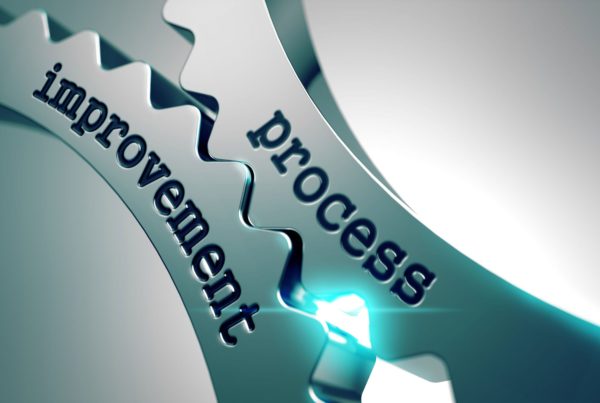In our last issue, we talked about measuring Customer Value on four dimensions of Service, Cost, Quality and Speed.
In this issue we share the 3 step recipe to developing these metrics:
1. Prioritizing Value Add and Non-Value Add Activities
2. Establishing Process Performance Metrics
3. Establishing Targets that Align with Strategic Objectives
Prioritizing Value Add and Non-Value Add Activities
In this issue we look at part one for creating effective Performance Metrics; determining the process outcome. This step focuses on identifying key information about an organization’s processes. Processes must be documented and understood before the value creation can be identified.
Begin by describing the purpose of the process. What is the process outcome? How does the process contribute to delivering a product or service to the end customer? Does the process start and end in the department? For example, in a call center, the process outcome should be the resolution of a customer inquiry.
This process may include steps such as customer placing the inquiry, customer queuing, answering call, looking up customer in system, etc. The second step is to identify where, in the process, is value added to the customer. The only value created in this process to the customer is answering the call, and actual resolution of the inquiry. All other activities, although part of the process, do not add value to the customer. The KPI’s should be developed around these value-added activities to assess where you currently stand in providing value to the customer and where you could be doing better.
The next part of this series looks at the importance of Identifying the Customer or Stakeholders before choosing Performance Metrics
Before identifying customer value or KPIs, a business unit must understand who they are serving. The customer is whoever the organization serves through products or services. Internal customer must be identified as well as external. Understanding who is the end customer is important, as different customers will have different needs and value perception. The strategic objectives of an organization are created with customer value in mind: what does the customer need and what are they willing to pay for.
Identify Customer Value
Key Performance Indicators (KPIs) are measurements of how well a company, a department, a team, or an individual are meeting pre-determined targets. KPIs ensure that everyone within an organization is on track with the long-term goals and the strategic objectives of an organization.
Why establish KPIs?
Simply put, KPIs make targets and goals visible every single day at every level of an organization. If your organization established a sales goal to sell 10,000 products each year, how will you know if you are on track every month? How about every day? How will anyone know when to make changes? KPIs break down strategic objectives into specific, measurable targets that are communicated regularly. They are quantitative measurements that empower managers to make meaningful changes as needed and communicate progress frequently to their team.
What should KPIs Measure?
Not all KPIs are created equal; Number of emails sent, number of meetings attended, or % of something are targets, sure, but they provide no value. What do you get out of achieving them? More importantly, what does your customer get out of you achieving them?
KPIs should measure activities related to customer value which can be evaluated on 4 different dimensions. When developing your KPIs, you should start with defining at least one metric per customer value dimension. Here are the 4 customer dimensions, explained:
Service
Ability to serve a customer with a product or service relative to their expectations. Creating service value for a customer means meeting their expectations of your product or service. From your perspective as a business, the metrics to measure and improve are related to providing consistent and reliable delivery times. Examples of service metric measurements are:
- Phone calls answered within first minute
- Services delivered within a delivery timeframe
Productivity
Ability to deliver a product or service at a price that the customer is willing to pay. Productivity KPIs measure the ability to leverage inputs to deliver goods and services to the customer. They generally consist of measuring the resource inputs required to achieve certain output levels. They are the cost of providing a service to the customer and will therefore impact costs of the service. Productivity is usually measured as a percentage.
- Services delivered per hour
- Effort hours required to negotiate tenant leases
Quality
Ability to satisfy the customer with your product or service relative to their perceptions. Quality is the measure of acceptable units produced over the number of total units produced. Quality can also be considered as the effectiveness of a process. Quality is usually shown as percentage and can be measured by:
- Poor inputs received
- Likelihood to Recommend to a Friend
- % Service Failures
- % Repeat customers
Speed
Time required to deliver a product or service to a customer, relative to their perceptions. Speed is the time required to provide goods and services to the customer. The goal of tracking speed KPIs is to reduce throughput time by decreasing the time of the overall process through waste reduction. Speed can be measured by:
- Measure of the oldest outstanding order
- Request to Solution
- Time from Order to Service delivery
Questions? Contact Us
If you want to learn how to instill a culture of Continuous Improvement within your organization contact us at Propel Solutions today. We specialize in creating high performing teams and have a proven track record of powerful results.
Propel Solutions
- 📍 789 W. Pender Street, Vancouver, BC, Canada
- 📞 604-346-5185








